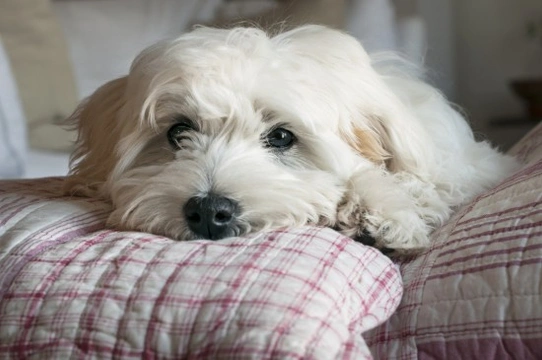
10 Calming Tips for Anxious Dogs: A Compassionate Guide
1. Confirm Anxiety
Helping an anxious dog begins with ensuring that the unusual behaviour is indeed caused by anxiety and not a medical issue. Common symptoms such as increased vocalisation, trembling, hiding, excessive grooming, or inappropriate urination can be signs of anxiety but also underlying conditions like thyroid disease or urinary tract infections. A veterinary check is essential to rule out health problems. If anxiety is diagnosed, your vet might recommend a qualified canine behaviourist for further support and tailored advice.
2. Establish the Root Cause
Understanding the triggers behind your dog's anxiety is crucial. Keep a diary of any routine changes or stressful events like the arrival of a new family member or loud noises such as fireworks or thunderstorms, which commonly provoke noise phobias in dogs. Some anxieties stem from separation or traumatic experiences leading to phobias. Identifying and minimising exposure to these triggers forms the cornerstone of effective calming strategies.
3. Nutrition & Behaviour
Your dog’s diet can influence anxiety levels. Changes in food or irregular feeding schedules may impact blood sugar and serotonin levels, affecting mood and stress. Return to a consistent, quality diet if behaviour changes coincide with new food. Some dogs may react adversely to additives or preservatives, although evidence is mostly anecdotal. Ensure your dog eats sufficient meals regularly, as low serotonin from lack of food can worsen anxiety symptoms.
4. Pheromone Therapy
Pheromone products containing adaptil mimic a mother dog’s comforting signals to puppies. Available as sprays, collars, and diffusers, they can reduce anxiety by creating a reassuring environment. However, pheromone therapy should complement efforts to identify and reduce stress triggers rather than replace them.
5. Behavioural Modification
Active behavioural techniques help your dog learn calm responses. Each dog’s needs and anxiety causes vary widely. Some find comfort in crates, while others do not. Avoid reinforcing panic behaviours by not reassuring during episodes but work to pre-empt stress and help your dog settle beforehand. Never punish anxious behaviour—it can worsen stress. Desensitisation and counter-conditioning are powerful tools if introduced early, involving gradual exposure to triggers at sub-threshold levels and teaching alternative positive behaviours like sit or stay. Sound desensitisation CDs are available for noise fears like fireworks.
6. Separation Anxiety
Separation anxiety is a common challenge. Ensuring your dog spends quality time with you is vital, but avoid constant attention, which may increase dependence. Start with brief absences, using safe toys and a comfortable environment to keep your dog occupied. Background sounds like softly playing radio may help. Enlisting a behaviourist for specialised guidance is worthwhile, and medication may be prescribed alongside training. Encouraging other family members to share care duties can build your dog’s confidence and reduce fixation on one person.
7. Medication
In more severe cases, prescription medication under veterinary guidance can significantly improve quality of life. Drugs like benzodiazepines provide immediate calming but are generally short term due to side effects. Azapirones treat phobias and aggression linked to anxiety, while tricyclic antidepressants and selective serotonin reuptake inhibitors are used for longer-term management including compulsive behaviours. Medication should always complement behavioural therapy, not replace it.
8. Natural Remedies
Non-prescription calming aids include supplements like Adaptil tablets, containing GABA, L-tryptophan and vitamins, supporting relaxation during stress. Kalm Aid offers L-tryptophan and L-theanine to boost serotonin and dopamine, which promote confidence and wellbeing. Flower remedies such as Bach Rescue Remedy Pet are safe and alcohol-free options, with mixed evidence regarding effectiveness. Calming garments like Thunder Shirts apply gentle pressure, often helping dogs feel secure.
9. Minimise Stress
Dogs may be generally happy but become overwhelmed by irregular stressors like storms or vet visits. It’s essential to provide a safe indoor environment during such events and consider behavioural or medical interventions where anxiety severely impacts wellbeing. Early introduction of desensitisation techniques greatly enhances success.
10. Keep Calm
Your emotions influence your dog’s anxiety. Stay calm and composed, avoiding punishment or excessive attention during anxious behaviours. Instead, distract your dog with games or commands before undesirable behaviours develop. A consistent routine fosters security and reduces unpredictability, preserving your dog's trust and confidence.
By combining these strategies with patience, understanding, and professional help when needed, you can foster a calmer, happier life for your anxious dog.



